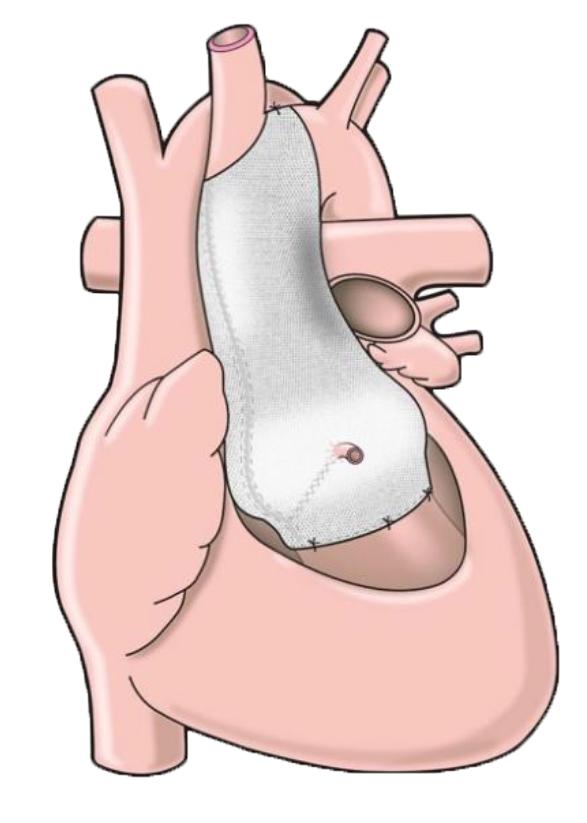I am 40 years old and a Marfan patient, which however was not clear for a long time. Since I was 10 years old I have always been much taller than my peers and I am now 205 cm tall (6’7″). My mum had me continually tested for the cause of my height (my father was 175 cm and my mum only 170 cm). I have big hands with long fingers, disproportionately longer legs but I have never been exactly skinny. My eyesight is perfectand my aortic root was a little enlarged, but nothing terrible. So the doctors’ conclusion was that I have some kind of syndrome resembling Marfan, but not Marfan. My cardiologist after few years of assessment wrote sometime in 2002 that my aortic root diameter was a “variation of norm” given my height, because it was not enlarging. So it seemed I had no problem.
Later, I decided to take the DNA tests once they became available. I wanted to rule out Marfan once for all, because the mere suspicion on me having it made it impossible to get life insurance. Unfortunately, I tested positive. My aortic root was at that time about 48mm in diameter, not enlarging significantly and my cardiologist (different from the previously mentioned one) said we had time for the op till it was 55mm.
Later I met a Marfan syndrome specialist for children and I was told to much of my shock that my time of waiting for the operation had passed. At that time I was 50mm and my aortic valve began to leak a bit. The specialist also mentioned that there might be an alternative solution to aorta and aortic valve replacement, but knew nothing more about it at that time. This was sometime before summer 2015. Later he sent me a link to Exstent.com and arranged a meeting with doctor Kočková from the Institute of Clinical and Experimental Medicine (IKEM) in Prague.
In November last year I decided to undertake the operation with Exstent and all the preparations began. I was not really concerned. Surely I was not happy about having my chest cut in half, but I felt lucky and blessed that the Exstent would be used. Many years ago I wondered why they cut out the aorta instead of putting some sort of bandage around it, but not having Tal Golesworthy’s engineering skills and knowledge, this remained just a thought.
My operation was performed by Professor Pirk in IKEM in March 2016. It should have been “easy”, I thought. Later he told me that I spent six hours in the theatre instead of two and half hours, because the root was too wide and needed much more work than usual. He said I should have come two years earlier. Luckily, besides having Tal’s Exstent I also had the best cardiac surgeon in my country performing the surgery.
Before arriving at IKEM I thought I would be nervous and wondered if they could sedate me right at the entrance and wake me up after everything was over. But I was not (nervous nor sedated). Everyone was really nice and professional and left me with zero doubt about them knowing what they were doing.
I was taken to my room, had a lovely chat with an anaesthesiologist and then Professor Pirk explained what was ahead of me and answered all my questions. Reading through the patient stories at this website my main concern was the tube that one wakes up with stuck in one’s throat. I wondered how unpleasant this would be and if I would choke. Well, after the operation when I woke up the tube was not a problem at all. I did not feel it really and if someone was not reminding me constantly not to bite it I would not have known it was there.
The morning before the operation I tried to shave my chest as much as possible and a nurse did the rest. Then I was taken to the operating theatre. I felt no fear. Before the operation I spent several months doing yoga and chi-kung (qi gong) to get in the best shape possible, which I did. So I felt I could not have done more for the success of the operation myself and I was in the best hands possible.
I was put to sleep shortly after arriving at the theatre and woke up in a Anaesthesiology-Resuscitation ward six hours later (not that I was aware how long it took). I was drowsing into sleep and out of it. I felt no pain. Occasionally I heard someone saying something. Professor Pirk came to tell me about how the operation went and that it was performed “one minute to twelve”, but I did not want to hear anything really. I was attended to by two very nice nurses. One of them decided to wash me when I gained a bit more consciousness. It felt quite early for me. I did not feel like I could not live without a wash for another day, but she was persistent and we managed (even turning slightly on a side).
After some time (no idea how much) I was taken to a three bed room of an Intensive care unit. I had three tubes and two wires coming out of my chest and belly, a catheter and some tubes on the side of my neck. But I had no pain and my only task was to drink and get better.
Everything was looking well, but after a day or two I had my first arrhythmia. My heart began to race, the heart monitor went crazy and I got really frightened. A nurse and a young doctor were with me immediately, I was given an injection and my heart went back to normal. But it was scary and the fear of this happening again has not left me since then.
Slowly I got rid of all the tubes and wires, was made to sit and later walked a little and on the fourth day I was moved to a normal room just with a transportable heart monitor. The rest of my stay in the hospital was quite uneventful. I was watching comedy shows on YouTube, talked to my family and friends over the phone and waited for the sixth day when I would be released home.
I wish to take this opportunity to thank everyone in IKEM once again. They were absolute professionals, very skilful, supportive and nice. The only member of their staff with whom I had a problem was their cook. But he helped me to lose six kilos, which was not bad
Generally, the operation took a lot of my strength and when my wife came for me on day six she wondered how I would make the two hour journey home in a car. I looked that weak and must admit I felt weak. Most patients after heart surgery go to a spa for four weeks. I just wanted to be with my family and my wife was very brave to support me in that (knowing what followed she might have changed her mind).
I was surprised to have no pain when I left the hospital, so I needed to take no pain killers. The only discomfort was caused by my stiff neck and shoulders. I had to have several pillows to half sit/lay in a bed, because I could not lay on a flat surface. This was getting better very slowly, because I was advised to lay on my back only for the six weeks and that was a long time. I was lucky to have a good friend who is a physio. He came over and began to practice Vojta’s method with me, which helped me to release tension from my shoulders and open my chest a bit.
Some two weeks after the operation I went to sleep in the evening and suddenly, out of nowhere, another arrhythmia came. My wife had to call an ambulance. My heart rate was over 200 bpm and I thought I was dying. I was at the edge of fainting so it took nearly one hour to transport me to the local hospital. I was given some injections, but they did not help and the next day I had to have an electric charge (same as they do to people in films when they need to restart their heart) to restore the right rhythm. This was successful, I was released home with a bunch of new pills and told that if it repeated more often they would put a wire in my heart and burn the places from which the arrhythmia starts. That was exactly what I needed to hear.
From that moment I became anxious without realising it. I can see now how much I was put out of balance by the cut of my chest, not just physically but also emotionally. For example, I became quite obsessed with food. I ate two times more than usual, which was ok, necessary for my healing process and I gained a little more strength every day. But then, as I was observing the occasional odd beats of my heart that appeared from time to time, I began to believe that it has to do with me not being strong enough. For some strange reason this meant that I had to eat every second hour. After a week from the first arrhythmia my wife was not fast enough with the food and I had another one. This time it was milder, only about 155 bps and it stopped by itself without any treatment after I was taken to hospital some two hours after it started.
When I got home the next day I had a call from my friend who is a psychiatrist and she said I had a text book example of a post traumatic stress disorder and gave me some pills to deal with it. I felt strange, because I never thought I might go crazy and suddenly a psychiatrist was prescribing me some medicine. But I am glad she did, because the drugs really helped. I could sleep much better and my anxiety went away. It had a side effect. It was not easy to get rid of the drugs for it was very addictive, but I was so glad not to have another arrhythmia that I did not mind.
At that time I was very happy to have the opportunity to share my experiences with Tal. His replies were supportive, gave me all the information I needed and they were funny. Tal has a very nice sense of humour and as you can imagine a good laugh was another ingredient that I needed to get better.
I was also sending my medical reports to Dr. Kočková in IKEM and she patiently explained to me what happened and said that my arrhythmias were most likely reactions of my heart to the surgery. This at the end showed to be so, because I have had no arrhythmia since and now I am nearly five months after the operation.
In one of his emails Tal wrote to me that two months after the operation I would look back not believing what had happened and feeling much better. He was so right. It took me about two and half months to get most of my strength back and get rid of my biggest enemy, anxiety. After four months I felt nearly the same as before the operation.




